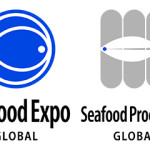A green, or “best choice,” rating from the Monterey Bay Aquarium’s Seafood Watch program can arguably have more power of influence in the marketplace, particularly with consumers, than an eco-label. Since Seafood Watch covers both wild and farmed product, its ratings can be easily adopted by major buyers to guide their sourcing decisions.
And it’s not limited to the U.S. market. A recent green rating for farmed king salmon from New Zealand also proved that Seafood Watch’s influence extends into the Southern Hemisphere.
About six companies account for all of the farmed king salmon production in New Zealand. With about a 10 percent share, at 1,000 metric tons (MT) annually, Mt. Cook Alpine Salmon (MCAS) in Wakatipu, N.Z., brings a product that is unique to the international seafood market — a farmed king, or chinook, salmon raised in fresh water.
Terry Bradley, technical director for MCAS, said the company has been refining its technology since 1992 when its farm began raising sockeye salmon before switching to kings three years later. Bringing in king salmon stock originating from the McLeod River in California, USA, production since then has increased tenfold. And now, armed with a difficult-to-achieve stamp of approval from Seafood Watch, the company is poised to capture more sales in key markets like the United States, where Seafood Watch has gained a toehold with consumers and has a stable of buyers following its lead, sticking only to green and yellow (“good alternative”) species.
“We are extremely pleased to be recognized by Seafood Watch for our commitment to sustainability and best farming practices and believe these values are of significant importance to an increasing sector of the consumer market,” Bradley said. “We believe this recognition will further increase the demand for our salmon.”
Bradley noted that New Zealand is the first “country sector” to receive this type of recognition from Seafood Watch, which he said shows the industry is leading the world with its environmental management practices. The company earned Best Aquaculture Practices certification in 2012 and annually meets “rigorous requirements for sustainability and quality” to sell to Whole Foods Market, where their fillets sell for roughly USD 15 a pound (EUR 13.20).
The U.S. market accounts for about half of the company’s sales, with 25 percent staying in the domestic market. The green rating will help there, too. “Although there was recognition by some New Zealanders of Seafood Watch, it was not widely known,” Bradley said. “However, the ranking of the New Zealand salmon industry and resultant publicity has markedly increased awareness in the country of Seafood Watch and what it stands for.”
New Zealand’s remote geographical location is beneficial to farmed salmon production in that it is segregated from other production regions that have struggled with aquaculture disease and consequently use pesticides and antibiotics, which MCAS does not employ. “The country has a rigorous bio-security program that has not allowed the import of live salmon or gametes since the original introductions,” Bradley said. “This has been a major factor in keeping NZ free of the major pathogens plaguing much of the salmon industry globally.”
The MCAS farm is similarly isolated. Its salmon are raised in hydrocanals, so the farm is a secondary user of water primarily used for hydroelectric power generation. There are no predators or marine mammals in the water, which flows at rates of up to several million gallons per minute. With easy land access to its rafts and no interference from ocean storms, the main challenges are limited to the unique configurations of the canals, which have been conquered through trial and error over two decades.
With a low stocking density (approximately 16 kilograms per cubic meter) and a fish-in-fish-out ratio (between 1.2:1 to 1.4:1) that should leave any remaining skeptics without argument, Mount Cook Alpine Salmon and New Zealand’s farmed king salmon industry in general are prime examples of what aquaculture can be.





